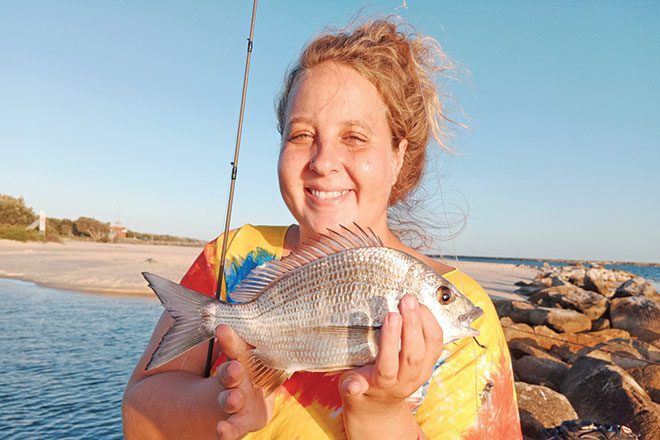Well, so far we have dodged any very bad weather, apart from a lot of wind and huge swell from the cyclone that slid past out at sea.
Let’s hope any future intense systems follow the same route and leave us to have a nice spring for a change.
Fishing throughout the Clarence Valley region during February was fairly good overall, with most of the target species of bream, tailor, whiting and flathead all being taken in reasonable numbers inside the river, and along the beaches and headlands.
While offshore, both spanish and spotted mackerel turned it on for the boaties.
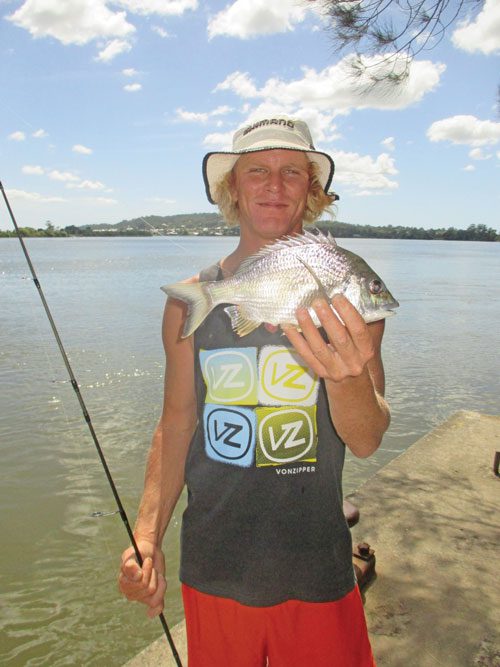
Both species of mackerel are biting freely all along the coast – from Minnie Water in the south to Black Rocks in the north – and it should be only a matter of time before bigger spaniards start being landed from our breakwalls on either live bait or lures.
Jewfish have been a bit harder to find in recent weeks, with only the occasional nice school jew being reported from the Iluka and Yamba walls, on live yellowtail or soft plastic lures.
Lovers Point at Yamba, the Iluka Bluff and Frazers Reef have all yielded fish around the 10kg mark on hard-bodied lures.
The beauty of living on the Far North Coast is that jewfish are available 365 days a year, which is why I live here and won’t be moving anytime soon.
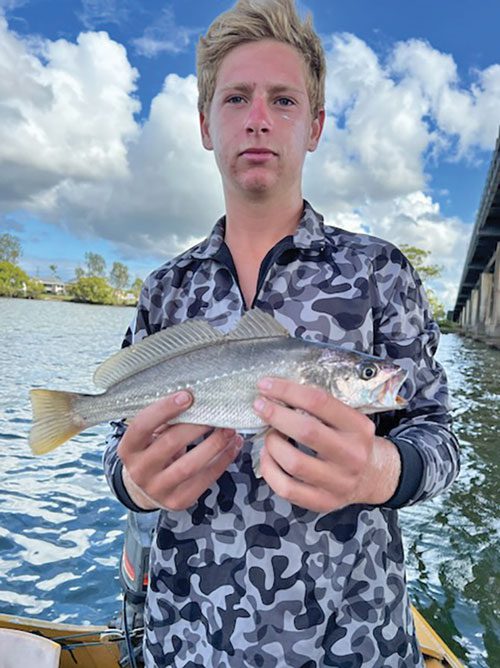
Inside the Clarence River, bream are a dime a dozen, and Mischa and I have been having a ball fishing with green prawns on the Ilarwill Wharf slightly west of Maclean.
In a typical four-hour session, we averaged around fifteen bream of various sizes plus a couple of good flathead, all of which we released to fight another day.
The public wharf we’ve been fishing is about 2km west of Maclean on Lawrence Rd – about 80m before the Maclean Golf Club tee off – and is well worth a fish because there is no shortage of herring around the pylons, so I reckon an occasional school jew would be in residence too.
The southern bank of Goodwood Island has produced a few elbow-slapping whiting on live worms, however their numbers have dwindled markedly in recent weeks.
Thankfully flathead have been topping up a lot of catches, so a good feed is still to be had if you’re prepared to put in the time and effort.
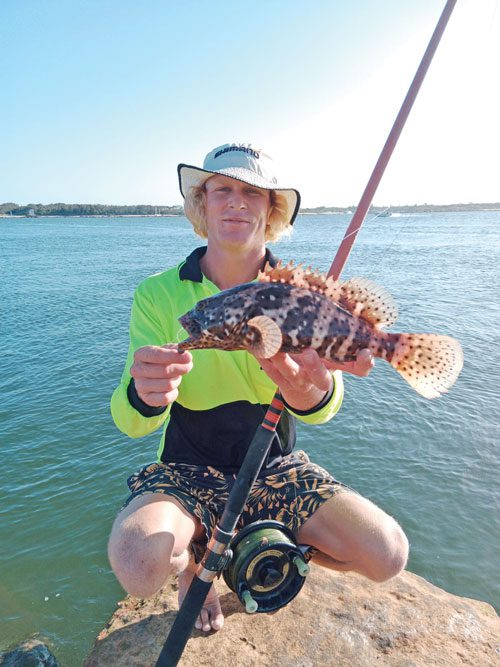
Mischa and his girlfriend Rebekah have spent a fair bit of time fishing around the rocks at the Iluka Marine Rescue tower, scoring some decent flathead to 60cm on live herring, as well as small estuary cod and large bream to 43cm.
One of Bek’s memorable catches this month was a small cottonmouth trevally, a species I have never personally seen.
When I add that fish to the rock flathead she caught last year, I’m thinking there must be something to the theory of female pheromones, which may be giving her the edge over Mischa and I.
Main Beach Iluka has finally started to produce reasonable numbers of solid chopper tailor around the 2kg mark, with whole garfish or bonito strips being the preferred bait to use.
Hopefully these critters hang around for a while because in recent times, they seem to be on the chew for a few days then disappear for weeks, but only time will tell, I guess.
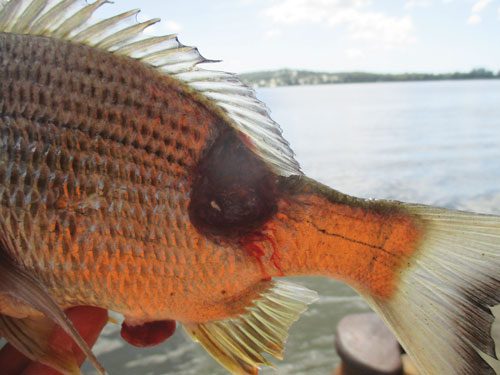
The beach along Shark Bay has been absolutely littered with billions of baby pipis, which is a good sign that the beach is in healthy condition after nine months of flooding.
While bream and swallowtail dart are about in healthy numbers, there has been very little good flathead water, with most of the beach being a series of long deep gutters.
Along the beach, there’s been no shortage of just-legal chopper tailor and you could do worse than return one back out live for a jewfish – tailor are one of the best jew bait available.
Sure, you’re going to have to put up with a heap of sharks, however jewfish actually feed with the toothy ones, so persevere and your dream jew could be but a cast away.
March will see big spanish mackerel and longtail tuna begin to be taken from the breakwalls and accessible headlands along the Far North Coast, with live garfish suspended under a float or lures being the best way to get a hook-up.
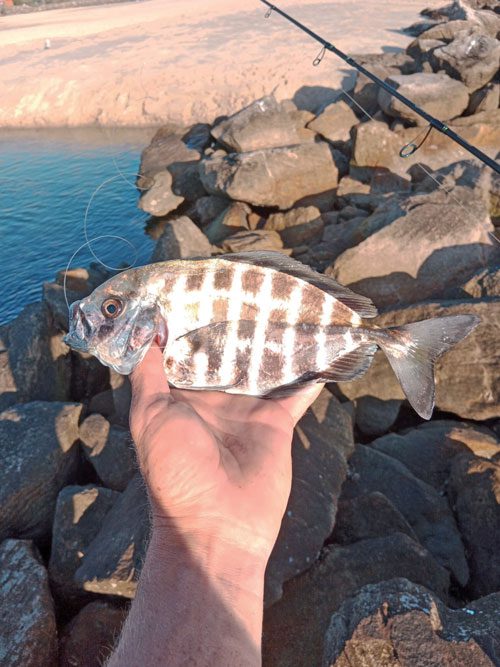
Hopefully, the tailor will finally play ball along the beaches because they are great fun and not everyone wants to chase the larger species, and don’t forget to use one as live bait for jewfish.
Offshore mackerel will continue to dominate catches, with most boats trolling lures at first light then anchoring once the sun is up and fishing un-weighted blue pillies into a nice berley stream, which gives the added bonus of some big snapper as well.
Inside the rivers, catches of whiting will start to wane somewhat towards the end of the month, as the cooler southwesterly greets the early birds each morning.
While the open beaches will continue to produce mixed bags of bream, dart and the occasional school jew.
Let’s hope Mother Nature plays her part and doesn’t decide to suddenly ruin our party.
Go on, get out there – until next month, safe fishing.
 Bush ‘n Beach Fishing Magazine Location reports & tips for fishing, boating, camping, kayaking, 4WDing in Queensland and Northern NSW
Bush ‘n Beach Fishing Magazine Location reports & tips for fishing, boating, camping, kayaking, 4WDing in Queensland and Northern NSW

